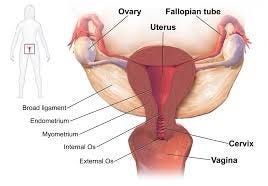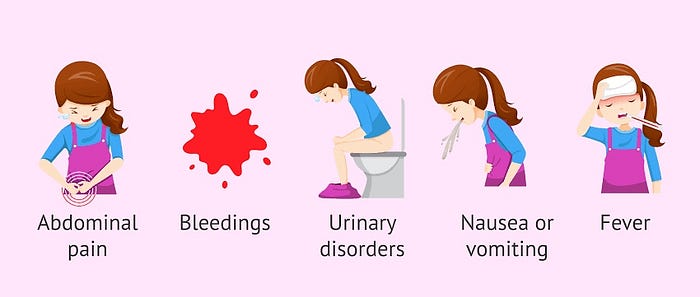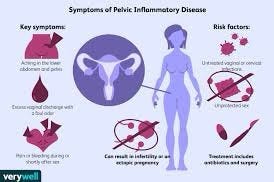- “Empowering Emergency Medicine Physicians”
- “Queue Management Software and Hospitalists in Modern Healthcare”
- “Enhancing-Pediatric-Infectious-Disease-Care”
- “Revolutionizing-Geriatric-Care”
- “Optimizing-Patient-Care-in-Pediatric-Rheumatology”
- “Pediatric-Pulmonology-Care”
- “Revolutionizing-Pediatric-Gastroenterology”
- “Enhancing-Pediatric-Neurology-Care”
- “Optimizing-Pediatric-Cardiology”
- “Enhancing-Pediatric-Endocrinology-Care”
- “Empowering-Neonatologists-with-EMR-Software”
- “Pediatrics-in-Focus”
- “Empowering-Neurologists-with-Electronic-Prescriptions”
- “Streamlining-Dermatology-Practice”
- “Streamlining-Psychiatry-Practice”
- “A-Game-Changer-for-Infectious-Disease-Specialists”
- “Allergist/Immunologist-Practices-with-QME-EMR-and-Hospital-Management-Systems”
- “Empowering-Hematologists-and-Revolutionizing-Healthcare-Management”
- “Optimizing-Healthcare-with-HMIS”
- “Transforming-Healthcare-with-Endocrinologist”
- “Healthcare-Management-with-QMe-EMR-for-Nephrologists”
- “Revolutionizing-Healthcare-Management-with-Cardiologist”
- “Streamlining-Operations-with-Queue-Management-Software”
- “Optimizing-Healthcare-Delivery”
- “Transforming-Healthcare-Management”
- HMIS And Decision Support Systems
- Dengue Unveiled: An Overview of Causes, Symptoms, and Prevention.
- Dengue Fever: Unraveling the Mosquito-Borne Menace.
- HMIS-and-Continuity-of-Care
- Project-Management-for-Successful-HMIS
- Catalysts of Wellness: The Transformative Power of Diagnosis and Screening in Healthcare
- Patient-Data-Management
- Guardians of Healthcare: The Vital Role of Fraud Detection in Ensuring Ethical Care
- Unlocking Insights
- Healthcare in the Digital Age: The History Of Development Of HMIS
- Transforming Healthcare
- Safeguarding-HMIS-Data
- HMIS-Integration-Challenges
- ANXIETY UNVEILED: CONQUERING FEARS AND CULTIVATING CALM.
- BEYOND THE BLUE: EMBRACING LIGHT ON THE PATH OF DEPRESSION.
- BEYOND THE BLUE: EMBRACING LIGHT ON THE PATH OF DEPRESSION.
- HMIS and Resource Allocation
- HMIS Data Accuracy and Integrity
- SOOTHING THE SILENT PAIN: UNDERSTANDING VULVODYNIA.
- Impact of HMIS on OPD Operations
- In Patient Management Through Health Management
- WITHIN THE SHADOWS: UNDERSTANDING BRAIN TUMOURS FROM WITHIN
- HMIS-and-Health-Insurance-Integration
- HMIS-Data-Analytics-for-Preventive-Care
- BREAKING FREE: OVERCOMING THE HURDLE OF URINARY INCONTINENCE
- “HMIS and Doctor-Patient Communication”
- HEALING INSIGHTS: THE POWER OF THE HOSPITAL MANAGEMENT INFORMATION SYSTEM.
- SOLVING THE OVARIAN PUZZLE:UNDERSTANDING OVARIAN CYST INSIDE OUT
- Usability And User Experience In HMIS
- WARRIOR’S BATTLE: TRIUMPHING OVER UTERINE CANCER
- POLYCYSTIC OVARY PUZZLE: UNRAVELLING THE ENIGMA OF PCOS
- Unlocking-the-Potential-of-HMIS-Data-for Medical-Research-and-Healthcare-Policy-Enhancement
- Feminine Health Unplugged: Empowering Women in Vaginal Infection Awareness
- Revitalizing Feminine Comfort: A Journey Through Vaginal Wellness.
- HMIS Vendor Selection Guide
- UNDERSTANDING FIBROIDS: NAVIGATING THE INTRICACIES OF UTERINE HEALTH.
- Best Practices for Data Migration in Healthcare Management Information Systems (HMIS)
- CONCEIVING HOPE: NAVIGATING THE JOURNEY OF INFERTILITY
- MENSTRUAL IRREGULARITIES: CAUSES AND TREATMENT
- RISING ABOVE: EMPOWERING WOMEN WITH PELVIC ORGAN PROLAPSE
- Leveraging HMIS for Enhanced Public Health Management and Disease Surveillance
- Challenges and Benefits of Implementing HMIS in Rural and Remote Healthcare Settings
- Securing Healthcare Continuity
- Pancreatic Cancer
- Lymphoma
- Leukemia
- Bladder Cancer
- Skin Cancer (Melanoma)
- COLORECTAL CANCER
- All about Prostate Cancer
- Fighting out the Disease of Lung Cancer
- Advances in Breast Cancer Treatment: A Comprehensive Guide
- Autism Spectrum Disorder (ASD)
- EHR SYMPHONY: HARMONIZING HEALTHCARE THROUGH ELECTRONIC RECORDS .
- Understanding Testicular Cancer: Detection, Treatment And Awareness.
- Childhood Obesity
- Kawasaki Disease
- Eczema (Atopic Dermatitis)
- Understanding Bone Cancer: A Brief Overview.
- Virtual Healing: Navigating Healthcare Through Telemedicine and Telehealth.
- Attention-Deficit/Hyperactivity Disorder (ADHD)
- PELVIC PAIN:CAUSES SYMPTOMS AND PREVENTIONS
- Type 1 Diabetes: Causes, Symptoms, and Treatment
- Gastroesophageal Reflux Disease (GERD)
- Battling Pneumonia: Unveiling the Stealthy Invader of the Lungs
- Unravelling the Complexity of Allergic Reactions: Understanding, Managing, and Thriving
- Rashes (Eczema, Dermatitis)
- UNDERSTANDING CERVICAL DYSPLASIA: CAUSES, SYMPTOMS AND MANAGEMENT
- Chicken Pox
- Endometriosis Unmasked: A Closer Look at the Silent Struggle
- Croup
- Hand, Foot and Mouth Disease (HFMD)
- THE DAWNING OF A NEW ERA: EMBRACING THE JOURNEY OF MENOPAUSE
- Urinary Tract Infections (UTIs)
- Strep Throat (Streptococcal Pharyngitis)
- Understanding Otitis Media(Ear Infection)
- 28th July In medical history!!
- Influenza (Flu) - Symptoms, Prevention and Management
- 27th July In medical history!!
- Respiratory Syncytial Virus (RSV) Infection
- SIGNIFICANCE AND ADVANTAGES OF HMIS: A DETAILED ANALYSIS
- Beyond Boundaries: Transforming Healthcare with Virtual Reality
- TRACK YOUR LIFE : A DETAILED UNDERSTANDING ON HEALTH MONITORING SYSTEM
- EXPLORING BENEATH THE SURFACE: UNDERSTANDING BARTHOLIN CYSTS AND ABSCESSES
- GUARDING GUT HEALTH: YOUR GUIDE TO POTENTIAL CROHN’S DISEASE PREVENTION.
- PATHWAYS OF HOPE: NAVIGATING THE CHALLENGES OF ESOPHAGEAL CANCER
- Gastric Battles: Confronting Stomach Cancer Head-On.
- HMIS IN SMALL CLINICS: A STEP TO A BETTER FUTURE
- Harmonizing Your Cycle: A Journey to Menstrual Health and Balance.
- Respiratory Syncytial Virus (RSV) Infection
- GUARDING OUR INTIMATE WORLD: A CLOSER LOOK AT STI
- Real-World HMIS Implementation Case Studies: Using Data to Transform Healthcare
- Gastroenteritis (Stomach Flu)
- Asthama - The Anatomy Of Breathing
- Influenza - A Silent Intruder
- Breast Cancer
SILENT INTRUDERS: UNRAVELLING THE MYSTERIES OF PELVIC INFLAMMATORY DISEASE
SILENT INTRUDERS: UNRAVELLING THE MYSTERIES OF PELVIC INFLAMMATORY DISEASE
INTRODUCTION
WHAT IS PELVIC INFLAMMATORY DISEASE?

Pelvic Inflammatory Disease (PID) is an infection of the female reproductive organs, including the uterus, fallopian tubes, and ovaries. It occurs when bacteria, typically from sexually transmitted infections (STIs) like chlamydia or gonorrhea, enter the vagina and cervix and then ascend to the upper reproductive tract. However, other types of bacteria not related to STIs can also cause PID.
PID is a serious condition that requires prompt medical attention and treatment. If left untreated, it can lead to various complications, including chronic pelvic pain, infertility, ectopic pregnancy (pregnancy outside the uterus), and an increased risk of developing pelvic adhesions (scar tissue) that can cause organs to stick together.
If you suspect you have PID or experience any symptoms of pelvic pain or infection, it’s crucial to seek immediate medical attention to prevent complications and ensure proper treatment.
CAUSES LEADING TO PID

The primary cause of Pelvic Inflammatory Disease (PID) is the spread of bacteria from the vagina or cervix into the upper reproductive organs, including the uterus, fallopian tubes, and ovaries. The most common route of infection is through sexual transmission, often from sexually transmitted infections (STIs). The bacteria responsible for most cases of PID include:
-
Chlamydia trachomatis: Chlamydia is the most common bacteria associated with PID.
-
Neisseria gonorrhoeae: Gonorrhea is another common STI that can lead to PID.
Other bacteria normally present in the vagina, such as those associated with bacterial vaginosis, can also play a role in causing PID.
Risk Factors:
Several factors increase the risk of developing PID, including:
1.Multiple sexual partners: Having multiple sexual partners or having a partner with multiple partners increases the risk of exposure to bacteria that can cause PID.
-
History of STIs: A previous history of chlamydia, gonorrhea, or other STIs increases the risk of developing PID.
-
Young age: Young sexually active women are at higher risk of PID.
-
Intrauterine Device (IUD): Women who use an intrauterine device for contraception have a slightly increased risk of developing PID shortly after its insertion.
-
Douching: Frequent douching can disrupt the normal bacterial balance in the vagina and increase the risk of PID.
-
Previous PID: A history of previous PID episodes increases the likelihood of recurrent infections.
It’s essential to practice safe sex, use condoms consistently and correctly, and limit sexual partners to reduce the risk of PID. Early diagnosis and prompt treatment of STIs can also help prevent the development of PID and its associated complications. If you suspect you have PID or experience symptoms of pelvic pain or infection, seek medical attention promptly for proper diagnosis and treatment.
SPOTTING THE SIGNS

Certainly, here are the symptoms of Pelvic Inflammatory Disease (PID) in more detail:
-
Pelvic pain or discomfort: The most common symptom of PID is pain in the lower abdomen or pelvic region. The pain can range from mild to severe and may be constant or intermittent. It is often described as a dull, aching sensation.
-
Abnormal vaginal discharge: Women with PID may notice a change in their vaginal discharge. The discharge may become more abundant, yellow or greenish in color, and may have an unpleasant odor.
-
Painful urination: PID can cause irritation and inflammation of the urethra and bladder, leading to pain or discomfort during urination.
-
Pain during intercourse: Many women with PID experience pain or discomfort during sexual intercourse, a condition known as dyspareunia. This pain is typically felt deep in the pelvis.
-
Fever: In some cases of PID, especially if the infection is severe, women may develop a fever. Fever can be a sign that the infection has spread and become more serious.
-
Irregular menstrual bleeding: PID can affect the uterine lining and disrupt the normal menstrual cycle. Women with PID may experience irregular bleeding, such as spotting between periods or changes in the length and flow of their menstrual cycle.
-
Increased or painful menstrual cramps: Women with PID may experience more intense and painful menstrual cramps than usual during their periods.
-
Nausea and vomiting: In severe cases of PID, women may experience nausea and vomiting along with other symptoms.
It’s important to note that the severity and combination of symptoms can vary from person to person. Some women with PID may have mild symptoms or may be asymptomatic, meaning they show no noticeable symptoms. It’s essential to seek medical attention promptly if you suspect you have PID or experience any concerning symptoms, as early diagnosis and treatment are crucial to prevent complications and promote good reproductive health. PID is a serious condition that requires proper medical evaluation and appropriate management.
TREATMENT THE TROUBLES

The treatment of Pelvic Inflammatory Disease (PID) aims to eliminate the infection, relieve symptoms, and prevent complications. Treatment typically involves a combination of antibiotics and may include the following:
-
Antibiotics: The mainstay of PID treatment is a course of antibiotics. Depending on the severity of the infection and the likelihood of sexually transmitted bacteria causing the PID, healthcare providers may prescribe a combination of antibiotics that cover a broad spectrum of bacteria. It’s crucial to complete the full course of antibiotics as prescribed, even if symptoms improve, to ensure that the infection is fully eradicated.
-
Pain Management: Over-the-counter pain relievers, such as acetaminophen or ibuprofen, may be recommended to alleviate pelvic pain and discomfort.
-
Hospitalization: In severe cases of PID, hospitalization may be required to administer intravenous antibiotics and closely monitor the patient’s condition.
-
Partner Treatment: To prevent reinfection and transmission, sexual partners should also be tested and treated for STIs.
-
Follow-up: Follow-up appointments with the healthcare provider are essential to ensure that the infection has resolved and to monitor for any potential complications.
It’s crucial to begin treatment as early as possible to prevent the spread of the infection and the development of complications. Untreated PID can lead to serious consequences, including chronic pelvic pain, infertility, and an increased risk of ectopic pregnancy.
During treatment, it’s essential to abstain from sexual intercourse until the infection is completely resolved and follow safe sex practices with the use of condoms to reduce the risk of reinfection.
If you suspect you have PID or experience any symptoms of pelvic pain or infection, it’s crucial to seek medical attention promptly. Early diagnosis and appropriate treatment can help prevent complications and ensure a successful recovery.
Prevention of PID involves practicing safe sex, using condoms consistently and correctly, and limiting sexual partners. Regular screenings and testing for STIs are also crucial, especially for sexually active individuals.
MEDICATIONS-

The treatment of Pelvic Inflammatory Disease (PID) typically involves the use of antibiotics to eliminate the infection. The specific choice of antibiotics and the duration of treatment will depend on the severity of the infection, the likelihood of sexually transmitted bacteria causing PID, and individual patient factors. Here are some common antibiotics used in the treatment of PID:
-
Ceftriaxone: This antibiotic is often used as a single intramuscular injection to cover the possibility of gonorrhea infection, which is a common cause of PID.
-
Doxycycline: It is commonly prescribed as an oral antibiotic to cover other bacteria that may cause PID, including chlamydia.
-
Metronidazole or clindamycin: These antibiotics are sometimes prescribed in addition to ceftriaxone and doxycycline to provide broader coverage against anaerobic bacteria.
The antibiotics used for PID are typically prescribed in combination to provide effective coverage against the various bacteria that may be involved. It’s crucial to complete the full course of antibiotics as prescribed, even if symptoms improve, to ensure that the infection is fully eradicated.
During treatment, it’s essential to abstain from sexual intercourse until the infection is completely resolved. Sexual partners should also be tested and treated for STIs to prevent reinfection.
In cases of severe PID or if oral antibiotics are not well-tolerated, hospitalization may be necessary to administer intravenous antibiotics and provide closer monitoring.
It’s important to seek medical attention promptly if you suspect you have PID or experience any symptoms of pelvic pain or infection. Early diagnosis and appropriate antibiotic treatment are crucial to prevent complications and promote a successful recovery.
PREVENTATIVE MEASURES
Preventing Pelvic Inflammatory Disease (PID) involves taking steps to reduce the risk of getting sexually transmitted infections (STIs), which are the primary cause of PID. Here are some prevention measures:
1.Safe Sex Practices: Practicing safe sex is one of the most effective ways to prevent STIs and PID. Use condoms consistently and correctly during sexual intercourse to reduce the risk of transmission of bacteria that can cause PID.
-
Limit Sexual Partners: Reducing the number of sexual partners can lower the risk of exposure to STIs and decrease the likelihood of developing PID.
-
Regular STI Testing: If you are sexually active or have multiple partners, it’s essential to get regularly tested for STIs, even if you have no symptoms. Early detection and treatment of STIs can help prevent the spread of infection and the development of PID.
-
Partner Treatment: If you are diagnosed with an STI or PID, it’s crucial to inform your sexual partners so that they can get tested and receive appropriate treatment. Treating sexual partners helps prevent reinfection and the spread of STIs.
-
Avoid Douching: Douching can disrupt the natural balance of bacteria in the vagina and increase the risk of infections, including PID. Avoid douching, as the vagina is designed to clean itself.
-
Hygiene: Practicing good hygiene can help prevent infections. Wash your hands before and after sexual activity and urination, and encourage your partner to do the same.
-
Vaccination: Vaccines are available for certain STIs, such as human papillomavirus (HPV) and hepatitis B. Consider getting vaccinated if you are eligible, as it can protect against these infections and reduce the risk of complications.
-
Regular Gynecological Check-ups: Regular visits to your healthcare provider for gynecological check-ups and screenings can help detect any signs of infection or reproductive health issues early on.
By following these preventive measures, you can significantly reduce the risk of developing PID and its associated complications. If you suspect you have PID or experience any symptoms of pelvic pain or infection, seek medical attention promptly for proper diagnosis and treatment. Additionally, QMe offers packages support for various medical services and features automated billing to ensure transparent and hassle-free financial transactions. Embracing QMe empowers hospitals to enhance patient experiences, optimize healthcare workflows, and deliver top-notch medical services.
FREQUENTLY ASKED QUESTIONS

Q: Can PID cause infertility?
A: Yes, PID can lead to infertility if left untreated. The infection can cause scarring and damage to the reproductive organs, leading to blocked fallopian tubes and difficulty conceiving.
Q: How is PID diagnosed?
A: PID is diagnosed based on a combination of medical history, physical examination, and laboratory tests. Pelvic exams and swabs to collect samples from the cervix and vagina are often performed to detect signs of infection.
Q: Can PID go away on its own?
A: PID typically requires treatment with antibiotics to eliminate the infection. While some mild cases may resolve on their own, untreated PID can lead to serious complications and should not be left untreated.
Q: Can men get PID?
A: No, PID is a condition that affects the female reproductive organs. However, men can be carriers of the bacteria that cause PID, and they can transmit these bacteria to their sexual partners, leading to PID in women.
Q: Can PID cause long-term complications?
A: Yes, PID can cause long-term complications such as chronic pelvic pain, infertility, and an increased risk of ectopic pregnancy. Early diagnosis and treatment are crucial to prevent these complications.
Q: Can PID recur after treatment?
A: Yes, PID can recur after treatment, especially if the underlying risk factors, such as multiple sexual partners or untreated STIs, are not addressed. It’s essential to follow prevention measures and practice safe sex to reduce the risk of recurrence.
CONCLUSION
In conclusion, Pelvic Inflammatory Disease (PID) is a serious infection that affects the female reproductive organs, including the uterus, fallopian tubes, and ovaries. It is primarily caused by the spread of bacteria from the vagina or cervix into the upper reproductive tract, often through sexually transmitted infections (STIs) like chlamydia and gonorrhea. Overall, PID is a condition that requires prompt diagnosis, appropriate treatment, and adherence to preventive measures to ensure good reproductive health and prevent serious consequences. If you have any concerns or experience symptoms of pelvic pain or infection, it’s essential to consult a healthcare professional for proper evaluation and management. Taking note on that, QMe is a cutting-edge hospital management software designed to revolutionize healthcare facilities worldwide. With its intelligent queue-based OPD management system, patients experience reduced waiting times and optimized appointment scheduling. The software’s comprehensive patient history and electronic health records ensure seamless access to critical medical information, enabling healthcare professionals to make informed decisions and provide personalized care. QMe’s automatic workflows streamline administrative tasks and treatment plans, enhancing overall efficiency and reducing human errors. The software’s IPD management feature enables smooth inpatient care coordination, while its TPA support simplifies insurance processes.
- “Empowering Emergency Medicine Physicians”
- “Queue Management Software and Hospitalists in Modern Healthcare”
- “Enhancing-Pediatric-Infectious-Disease-Care”
- “Revolutionizing-Geriatric-Care”
- “Optimizing-Patient-Care-in-Pediatric-Rheumatology”
- “Pediatric-Pulmonology-Care”
- “Revolutionizing-Pediatric-Gastroenterology”
- “Enhancing-Pediatric-Neurology-Care”
- “Optimizing-Pediatric-Cardiology”
- “Enhancing-Pediatric-Endocrinology-Care”
- “Empowering-Neonatologists-with-EMR-Software”
- “Pediatrics-in-Focus”
- “Empowering-Neurologists-with-Electronic-Prescriptions”
- “Streamlining-Dermatology-Practice”
- “Streamlining-Psychiatry-Practice”
- “A-Game-Changer-for-Infectious-Disease-Specialists”
- “Allergist/Immunologist-Practices-with-QME-EMR-and-Hospital-Management-Systems”
- “Empowering-Hematologists-and-Revolutionizing-Healthcare-Management”
- “Optimizing-Healthcare-with-HMIS”
- “Transforming-Healthcare-with-Endocrinologist”
- “Healthcare-Management-with-QMe-EMR-for-Nephrologists”
- “Revolutionizing-Healthcare-Management-with-Cardiologist”
- “Streamlining-Operations-with-Queue-Management-Software”
- “Optimizing-Healthcare-Delivery”
- “Transforming-Healthcare-Management”
- HMIS And Decision Support Systems
- Dengue Unveiled: An Overview of Causes, Symptoms, and Prevention.
- Dengue Fever: Unraveling the Mosquito-Borne Menace.
- HMIS-and-Continuity-of-Care
- Project-Management-for-Successful-HMIS
- Catalysts of Wellness: The Transformative Power of Diagnosis and Screening in Healthcare
- Patient-Data-Management
- Guardians of Healthcare: The Vital Role of Fraud Detection in Ensuring Ethical Care
- Unlocking Insights
- Healthcare in the Digital Age: The History Of Development Of HMIS
- Transforming Healthcare
- Safeguarding-HMIS-Data
- HMIS-Integration-Challenges
- ANXIETY UNVEILED: CONQUERING FEARS AND CULTIVATING CALM.
- BEYOND THE BLUE: EMBRACING LIGHT ON THE PATH OF DEPRESSION.
- BEYOND THE BLUE: EMBRACING LIGHT ON THE PATH OF DEPRESSION.
- HMIS and Resource Allocation
- HMIS Data Accuracy and Integrity
- SOOTHING THE SILENT PAIN: UNDERSTANDING VULVODYNIA.
- Impact of HMIS on OPD Operations
- In Patient Management Through Health Management
- WITHIN THE SHADOWS: UNDERSTANDING BRAIN TUMOURS FROM WITHIN
- HMIS-and-Health-Insurance-Integration
- HMIS-Data-Analytics-for-Preventive-Care
- BREAKING FREE: OVERCOMING THE HURDLE OF URINARY INCONTINENCE
- “HMIS and Doctor-Patient Communication”
- HEALING INSIGHTS: THE POWER OF THE HOSPITAL MANAGEMENT INFORMATION SYSTEM.
- SOLVING THE OVARIAN PUZZLE:UNDERSTANDING OVARIAN CYST INSIDE OUT
- Usability And User Experience In HMIS
- WARRIOR’S BATTLE: TRIUMPHING OVER UTERINE CANCER
- POLYCYSTIC OVARY PUZZLE: UNRAVELLING THE ENIGMA OF PCOS
- Unlocking-the-Potential-of-HMIS-Data-for Medical-Research-and-Healthcare-Policy-Enhancement
- Feminine Health Unplugged: Empowering Women in Vaginal Infection Awareness
- Revitalizing Feminine Comfort: A Journey Through Vaginal Wellness.
- HMIS Vendor Selection Guide
- UNDERSTANDING FIBROIDS: NAVIGATING THE INTRICACIES OF UTERINE HEALTH.
- Best Practices for Data Migration in Healthcare Management Information Systems (HMIS)
- CONCEIVING HOPE: NAVIGATING THE JOURNEY OF INFERTILITY
- MENSTRUAL IRREGULARITIES: CAUSES AND TREATMENT
- RISING ABOVE: EMPOWERING WOMEN WITH PELVIC ORGAN PROLAPSE
- Leveraging HMIS for Enhanced Public Health Management and Disease Surveillance
- Challenges and Benefits of Implementing HMIS in Rural and Remote Healthcare Settings
- Securing Healthcare Continuity
- Pancreatic Cancer
- Lymphoma
- Leukemia
- Bladder Cancer
- Skin Cancer (Melanoma)
- COLORECTAL CANCER
- All about Prostate Cancer
- Fighting out the Disease of Lung Cancer
- Advances in Breast Cancer Treatment: A Comprehensive Guide
- Autism Spectrum Disorder (ASD)
- EHR SYMPHONY: HARMONIZING HEALTHCARE THROUGH ELECTRONIC RECORDS .
- Understanding Testicular Cancer: Detection, Treatment And Awareness.
- Childhood Obesity
- Kawasaki Disease
- Eczema (Atopic Dermatitis)
- Understanding Bone Cancer: A Brief Overview.
- Virtual Healing: Navigating Healthcare Through Telemedicine and Telehealth.
- Attention-Deficit/Hyperactivity Disorder (ADHD)
- PELVIC PAIN:CAUSES SYMPTOMS AND PREVENTIONS
- Type 1 Diabetes: Causes, Symptoms, and Treatment
- Gastroesophageal Reflux Disease (GERD)
- Battling Pneumonia: Unveiling the Stealthy Invader of the Lungs
- Unravelling the Complexity of Allergic Reactions: Understanding, Managing, and Thriving
- Rashes (Eczema, Dermatitis)
- UNDERSTANDING CERVICAL DYSPLASIA: CAUSES, SYMPTOMS AND MANAGEMENT
- Chicken Pox
- Endometriosis Unmasked: A Closer Look at the Silent Struggle
- Croup
- Hand, Foot and Mouth Disease (HFMD)
- THE DAWNING OF A NEW ERA: EMBRACING THE JOURNEY OF MENOPAUSE
- Urinary Tract Infections (UTIs)
- Strep Throat (Streptococcal Pharyngitis)
- Understanding Otitis Media(Ear Infection)
- 28th July In medical history!!
- Influenza (Flu) - Symptoms, Prevention and Management
- 27th July In medical history!!
- Respiratory Syncytial Virus (RSV) Infection
- SIGNIFICANCE AND ADVANTAGES OF HMIS: A DETAILED ANALYSIS
- Beyond Boundaries: Transforming Healthcare with Virtual Reality
- TRACK YOUR LIFE : A DETAILED UNDERSTANDING ON HEALTH MONITORING SYSTEM
- EXPLORING BENEATH THE SURFACE: UNDERSTANDING BARTHOLIN CYSTS AND ABSCESSES
- GUARDING GUT HEALTH: YOUR GUIDE TO POTENTIAL CROHN’S DISEASE PREVENTION.
- PATHWAYS OF HOPE: NAVIGATING THE CHALLENGES OF ESOPHAGEAL CANCER
- Gastric Battles: Confronting Stomach Cancer Head-On.
- HMIS IN SMALL CLINICS: A STEP TO A BETTER FUTURE
- Harmonizing Your Cycle: A Journey to Menstrual Health and Balance.
- Respiratory Syncytial Virus (RSV) Infection
- GUARDING OUR INTIMATE WORLD: A CLOSER LOOK AT STI
- Real-World HMIS Implementation Case Studies: Using Data to Transform Healthcare
- Gastroenteritis (Stomach Flu)
- Asthama - The Anatomy Of Breathing
- Influenza - A Silent Intruder
- Breast Cancer